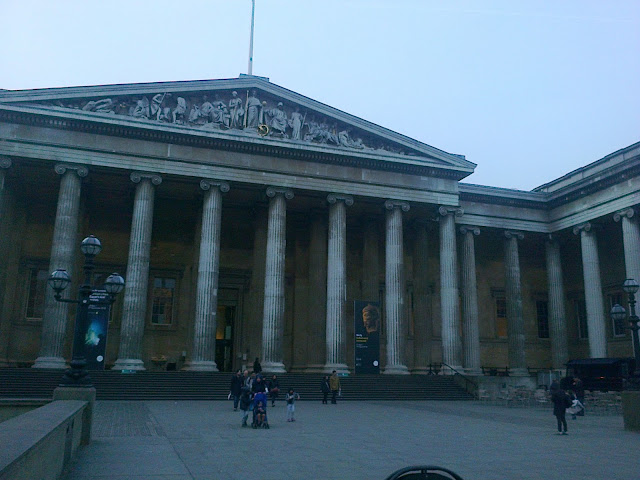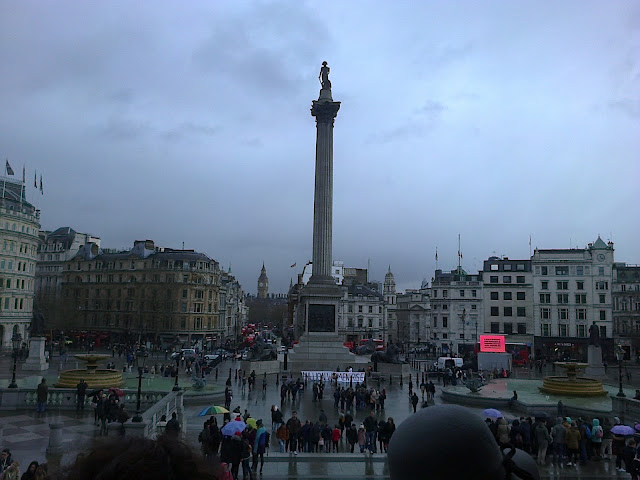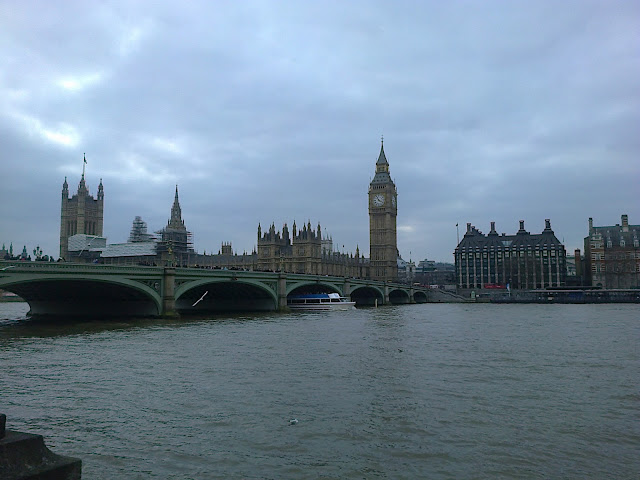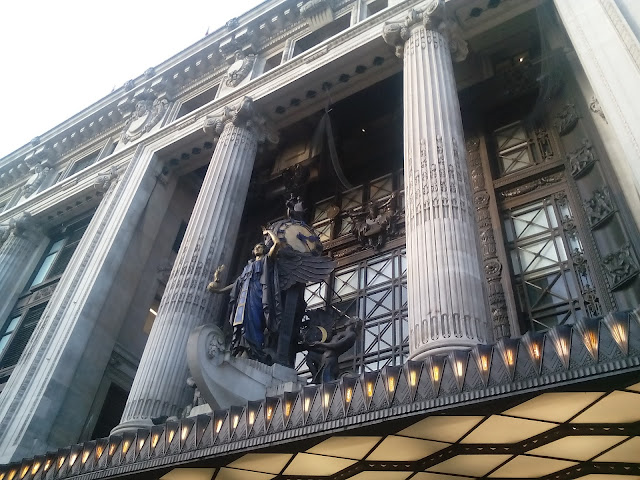Natural History Museum, London Diaries
13th March, 2016 @ Natural History Museum also dubbed as a cathedral of nature is the place where the story of mother earth, how it began, who were our geological ancestors and our lost companions are redeemed at this place thanks to the brave efforts and sleepless nights of numerous biologists, paleontologists, geologists, archaeologists, historians and all those explorers who traveled those extra miles, sometimes to forbidden lands only to bring us marvelous pieces and invaluable facts which have been hidden to us for billions of years of the earth's existence.
The mesmerizing view of the museum architecture planned and designed by Alfred Waterhouse who was inspired by Romanesque styles. The work of building the museum began in 1873 which finished by 1880 and was officially opened to the public in 1881. The terracotta figures and entrance facade are some of its unique architectural features which also symbolize the richness of its Victorian inspired styles.
This is the only complete mammoth skull that has ever been found in Britain. It was discovered in 1864 in deposits beside the River Roding at Ilford, only 18 kms away from the museum. The Ilford mammoth lived in a grassland environment at the end of an interglacial about 170,000 years ago.
The chimp's jaw was injured in a fall into a ship's cannon during the journey from Africa to England where he died shortly after his arrival in 1698. You can see the damage to the jaw on the left side of the head.
The body was given to a physician, Edward Tyson who suggested that this animal might explain stories of pygmies in classical literature. From his study of the skeleton he decided that there was link between 'the highest animals' and the 'lowest ranks of men'. This was nearly 200 years before Sir Charles Darwin claimed that humans and apes share common ancestry.
This is Diplodocus, a plant eating dinosaur that lived about 150 million years ago. It is one of the longest land animals that ever lived. From tip to tail it measures over 26 metres.
King Edward VII, as Prince of Wales requested this replica when he visited the Carnegie Museum in Pittsburgh, USA. It was presented to the Natural History Museum in 1905.
Early Earth- Earth formed about 4.5 billion years ago by the collision of lumps of rock spinning around a newly formed Sun. The impacts were so violent that a huge amount of energy was created, in the form of heat.
As the outer layers of rock cooled and hardened, the heat became trapped inside, along with massive amounts of radioactive materials. This trapped heat makes our core the hottest place on Earth and is the source of energy that drives the movement of plates at the surface.
The mesmerizing view of the museum architecture planned and designed by Alfred Waterhouse who was inspired by Romanesque styles. The work of building the museum began in 1873 which finished by 1880 and was officially opened to the public in 1881. The terracotta figures and entrance facade are some of its unique architectural features which also symbolize the richness of its Victorian inspired styles.
 |
| Woolly Mammoth Skull and Tusks |
 |
| Tyson's Pygmy |
The body was given to a physician, Edward Tyson who suggested that this animal might explain stories of pygmies in classical literature. From his study of the skeleton he decided that there was link between 'the highest animals' and the 'lowest ranks of men'. This was nearly 200 years before Sir Charles Darwin claimed that humans and apes share common ancestry.
 |
| Cast of Diplodocus; Found at Wyoming, North America |
King Edward VII, as Prince of Wales requested this replica when he visited the Carnegie Museum in Pittsburgh, USA. It was presented to the Natural History Museum in 1905.
 |
| Late Triassic ; Early Dinosaur period around 200 million years ago |
 |
| Late Jurassic ; Middle Dinosaur period around 150 million years ago |
 |
| Late Cretaceous ; Late Dinosaur Period around 50 million years ago |
 |
| Tools used by Archaeologists |
 |
| A Pangolin |
 |
| Saber-toothed Cat at Mammals Gallery |
 |
| The Red Piranha |
 |
| Reptiles Gallery |
 |
| Hermit Crab |
 |
| Locust Models |
Geology of Earth
As the outer layers of rock cooled and hardened, the heat became trapped inside, along with massive amounts of radioactive materials. This trapped heat makes our core the hottest place on Earth and is the source of energy that drives the movement of plates at the surface.
 |
| Aurorae Effect |
 |
| Folded Schist |
 |
| Koh-i-noor replica |
 |
| Contemporaries Queen Elizabeth I and Mughal Indian Ruler Shah Jahan |
 |
| Topaz and Peridot |
 |
| Contributors to the building of Museum |
 |
| Centenary Plaque |





























Comments
Post a Comment